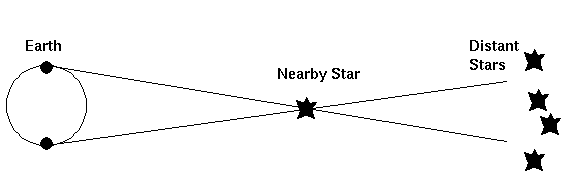An Earth-Centered versus a Sun-Centered 'Universe'
Ancient mathematicians were quite clever. They knew that if the Earth moved relative to the Stars, they would observe the nearby stars to show a parallax:

Other (less scientific) evidences supporting the Geocentric Universe:
-
1. The Earth is not part of the heavens.
2. The celestial objects are bright points of light while the Earth is an immense non-luminous sphere of mud and rock.
3. There is little change in the heavens: Stars are the same night after night. Earth is home of birth, change, and destruction. Celestial bodies have immutable regularity that is never to be achieved on the corruptible Earth.
4. Our senses show Earth is stationary:
Air, clouds, birds, and other things unattached to Earth are not left behind, as they would be if the Earth were moving. There is no strong wind.
If the Earth were moving, then a man jumping from a high point would hit the Earth far behind from the point where the leap began.